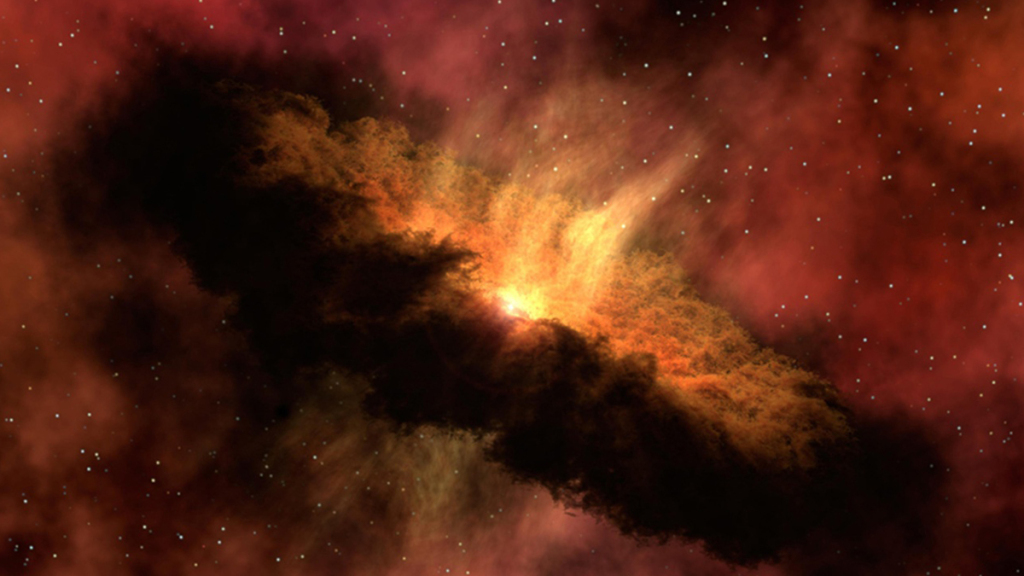The “origin” of everything is and has always been of particular interest to humankind, may it be the origin of the ‘infinite’ Universe itself, or the origin of an infinitesimal virus. Curiosity about life as we know it now led to research about how it came about it in the first place and that is what this opening article of The Science Paradox would like to enlighten you about.
Omnia ex nihilo (Everything out of nothing):
When one doesn’t know how something happened, or why it came about, there is only one thing he does: Google it. Unfortunately, Google itself hadn’t originated during that time, so the only thing to be done was to attribute the secrets of the unknown to God. Thus, different cultures and civilizations believed that the Universe was the creation of the Divine. Though the myths were exceptionally imaginative, the bottom line was that God had created a living, breathing world out of nothing – Omnio Ex Nihilo.

With the birth of astronomical observations, and the urge to go beyond “Divine intervention” and find a logical explanation, these mythological stories began to lose their prominence. Babylonian astronomers were the first to start mapping out the celestial bodies in the sky. Their studies were used as the basis of Greek astronomy, which, till today is considered the birthplace of modern astronomy.
While the Greek were basking in their glory of having discovered the early laws of the Universe, there was another civilization that was equally, if not more inquisitive about planetary movements and precise mathematical laws for them – the Indians. Arguably, some of the earliest studies on astronomy may be attributed to the sacred Hindu scriptures called the Vedas.
It is called Jyotish Shastra, which, as some of you might believe, is not just limited to the study of astrology. The Jyotisa Vedanga, written by Lagadha in the 1st millennium BCE is the pioneering literature of Indian astronomy. It has been an integral part of the Rig Veda and the Yajur Veda, and has been supported by great minds like Aryabhatta, Varahamihira, and Brahmagupta, as early as the 5th Century BCE.
According to the Vedas, the Universe is considered akin to an infinite cycle. It is divided into 4 epochs called “Yugas”- Satya Yuga, Dwapara Yuga, Treta Yuga and Kali Yuga of which we currently live in the Kali Yuga. These Yugas are cyclically created and destroyed. In fact, the Aryabhatiya, authored by Aryabhatta, even mentions the number of revolutions of the geocentric planets in one Yuga.
Due to Western influence, it is a common misconception that the origin of the Universe was first stumbled upon by the Greeks, who publicized their mathematical calculations to the rest of the world, and that the Indians were influenced by them. But deep study of our ancient scriptures provides evidence that the Indians were far ahead of their time when it came to theories of Science and Philosophy.


Pioneers Of Yesterday.
The Big Bang was essentially a brainchild of Georges Lemaitre. He called the single speck a primaeval atom. In 1929, Edwin Hubble published his first paper on the relationship between redshift and distance. Edwin Hubble sought to establish a relationship between the distance of a galaxy and the speed at which it is either approaching or moving away from our own. Though it seemed near to impossible at the time, he succeeded in laying down his theory that the more distant a galaxy is, the more is its recession velocity. In simpler words, the nearer a galaxy is to our own, the slower it will recede away from us. And the farther a galaxy is from ours, the faster it will move away. This is called Hubble’s Law.

Sir Fred Hoyle coined the term The Big Bang. It is truly an unfortunate story of how the name stuck to the theory. Hoyle was trying to explain why he does not believe that the universe has a beginning, and while defending his statement, he used the word “big bang”. It is quite sad how this haunted him later and turned into a mockery!
Sic Mundus Creatus Est.
A blip expands. Massive chaos. Birth of the universe.

‘We are the products of a huge blast, an upheaval!’ Actually,”blast” is a wrong way to describe it. This is one of the many falsely believed myths about the theory. The Big Bang was more of a gradual, yet fast expansion, quite similar to how those tablet tissues expand when you pour water on them! The Universe and its creation have always been widely discussed and has made inquisitive sky gazers wonder – how did it all start? “The Big Bang is a collection of mathematical equations and observations that make sense.” Many of us buy this story. Some of us try to come up with a different version of the origin. The rest believe in God. But the theory goes like this:-
One tiny single point, a singularity, filled with infinite intensity and enormous heat, started expanding 13.8 billion years ago. This expansion gave rise to the universe as we know it, and it began to take shape. It is still stretching, and we are a part of this transformation. Let’s face it – we are truly the products of light and energy. Adam and Eve were just newbies!
Let There Be Light.
The first second after the universe hatched out of its shell was insanely hot. The temperature was about 10 billion degrees Fahrenheit, and it was completely dark. Yes, exactly like a room filled with a bunch of stinky, sweaty kids playing dark room. Just multiply the effect by 10 billion and imagine how hot the baby universe would have been.
The cosmos held a mixture of a variety of fundamental particles such as neutrons, protons, electrons, positrons, photons, and neutrinos. According to NASA, light could not penetrate this primordial soup. This primordial soup contained a sea of free electrons that scattered the light away, and the light instead of penetrating was dispersed. Now, this soup was still a new primitive batch, just like freshly baked cupcakes, and needed some garnishing. As these fundamental particles started to decay or to combine, the temperature decreased considerably. The universe cooled down
According to CERN, currently, the Universe is said to be made up of 68% dark energy, 27 % dark matter and 5 % normal matter. Dark matter is a form of matter that does not absorb, emit or reflect light. Both dark energy and dark matter cannot be directly observed and are therefore inferred from observations of gravitational interactions between astronomical objects. This implies that all the matter we can see around us constitutes just 5% of the entire Universe! This brings into perspective the old adage, “You are merely a tiny speck in the vast universe”.

How Old Are You, Universe?
The universe is the most ancient thing to exist. It is 13.8 billion years old. We can figure out the age of the universe by simply looking at the farthest and the oldest stars in the sky. The other way is to measure the rate of expansion of the universe. The bright stars that you see today carry the light of their death when they exploded a million years ago. Light travels faster than anything around us. The average lifetime of a star is quite short for light to have reached earth from distant stars. Also, if we consider the theory of an ever-expanding universe, then the universe is too young for light to travel to earth from far away regions.
No one knows how that single energetic speck came into existence. It vanished without a trace. Was it a product of a prior explosion? Or an accumulation of unknown energy which just cannot be comprehended? Another question that baffles us is: Will the universe ever stop expanding? Or is it an infinite process?
~ Looking deeper into the Universe is looking deeper into the past ~

Authors:

Urja Kuber
Co-Founder at The Science Paradox

Anushree Krishnamurthy
Co-Founder at The Science Paradox
Illustrator:

Anushree Krishnamurthy
Co-Founder at The Science Paradox

